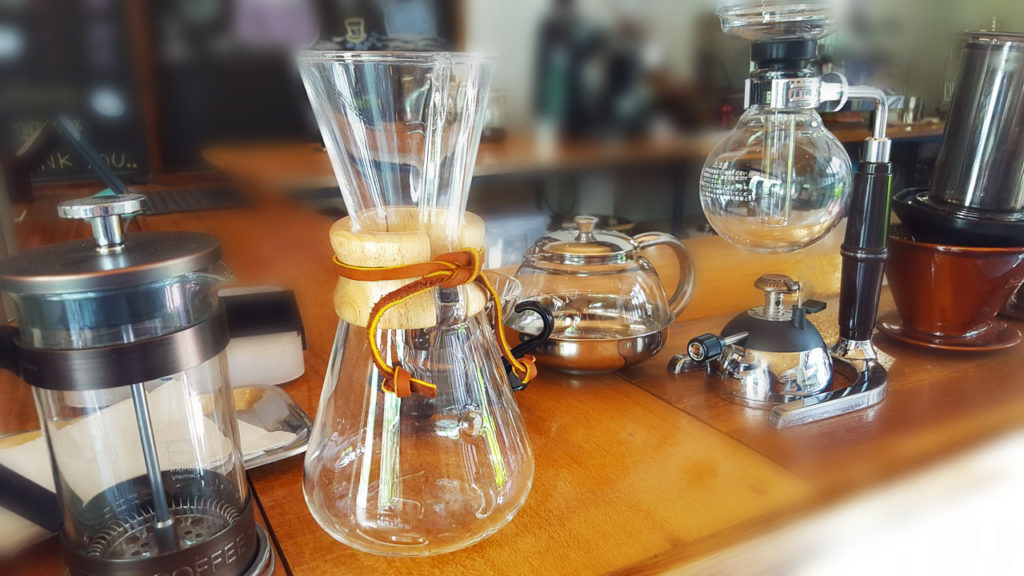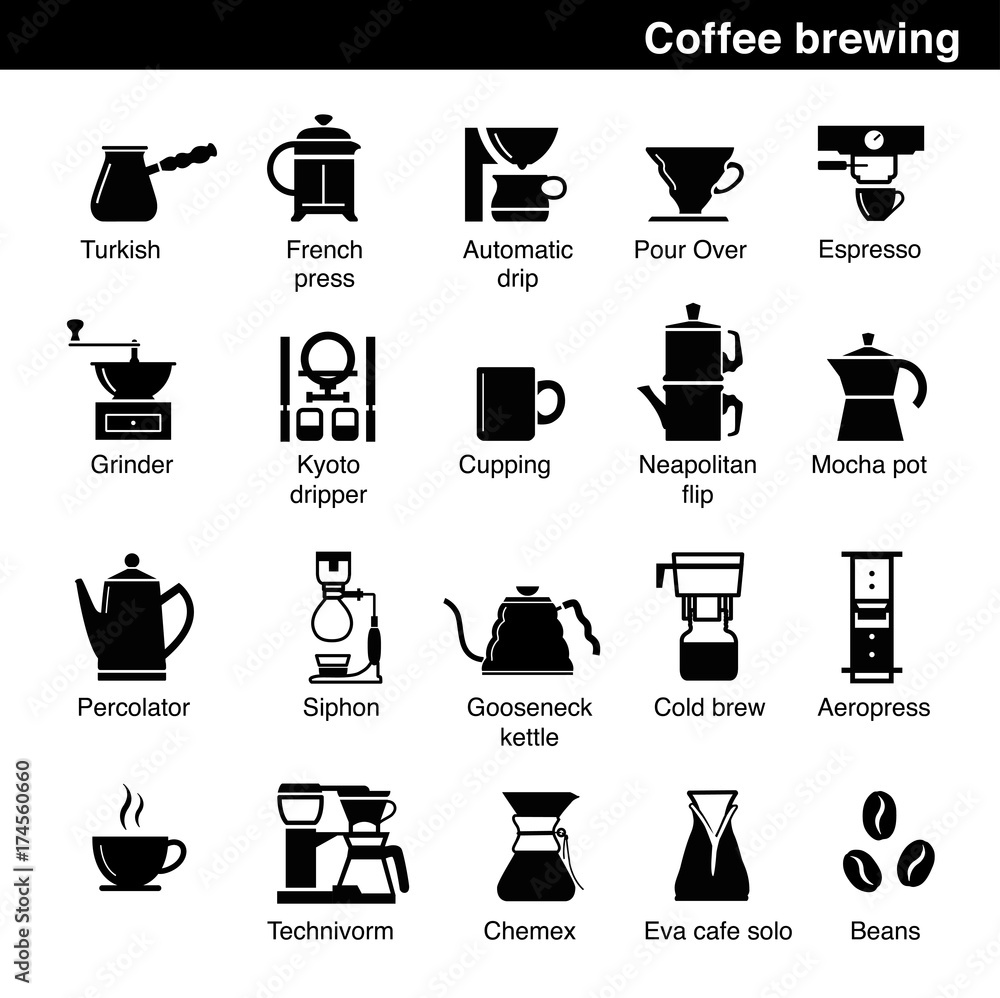Coffee Brewing Methods Debunked: From French Press to Cold Brew
The Scientific Research Behind Coffee Developing: Exactly How Temperature Level and Time Affect Your Drink
Recognizing the science behind coffee brewing reveals that temperature and time are not plain variables however crucial aspects that dictate the drink's flavor account and general high quality. The optimum developing temperature commonly falls in between 195 ° F and 205 ° F, while the duration of removal differs significantly across various techniques. This interplay of factors can cause a mug that is either fascinating or unsatisfactory. As we explore the nuances of these aspects, the concern develops: exactly how can one effectively equilibrium temperature and time to achieve that best brew?
The Chemistry of Coffee Removal
The chemistry of coffee removal looks into the intricate processes that change raw coffee beans into the aromatic beverage appreciated worldwide. This improvement largely involves the solubility of different substances existing in the beans, which are influenced by elements such as grind size, water quality, and the brewing method employed.
During the developing process, hot water functions as a solvent, removing soluble compounds, consisting of caffeine, sugars, acids, and lipids, from the coffee grounds. Each substance contributes to the flavor account, aroma, and body of the last drink. For instance, acids are responsible for bright and appetizing notes, while oils contribute to an abundant mouthfeel.
The initial stages of brewing extract acids and sugars, leading to an enjoyable level of acidity, while long term removal can lead to bitterness due to over-extraction of unwanted compounds. Comprehending these chemical communications is important for enhancing brewing methods, as the equilibrium in between removal time and water temperature can significantly affect the general top quality of the coffee.
Perfect Developing Temperatures
Finding the best developing temperature level is vital for opening the complete possibility of coffee flavors and aromas - coffee brewing methods. Study shows that the ideal variety for brewing coffee exists in between 195 ° F to 205 ° F(90 ° C to 96 ° C) Within this variety, the extraction procedure successfully liquifies the preferable soluble compounds in coffee beans, bring about a tasty and well balanced mug
Brewing at lower temperatures, such as below 195 ° F(90 ° C ), may result in under-extraction, generating a weak and acidic mixture with muted flavors. On the other hand, brewing at temperatures surpassing 205 ° F(96 ° C) can result in over-extraction, creating a rough and bitter preference as a result of the excessive dissolution of unwanted compounds, such as tannins.
Furthermore, the suitable brewing temperature level can differ depending upon the coffee bean type and roast degree. For example, lighter roasts typically profit from somewhat greater temperature levels to improve their complex taste accounts, while darker roasts might be much better fit to reduced temperatures to alleviate resentment.
Eventually, preserving precision in developing temperatures is important for accomplishing an unified equilibrium of flavors, ensuring that every mug of coffee supplies a satisfying sensory experience.
Impact of Developing Time
Brewing time plays a crucial duty in determining the taste account and total quality of coffee. The extraction procedure, which influences the taste, fragrance, and body of the drink, is mostly depending on how much time the coffee grounds are in call with water. Shorter developing times can result in under-extraction, bring about a sour or weak flavor, as not nearly enough soluble compounds are liquified. On the other hand, long term brewing can result in over-extraction, where undesirable substances are released, causing a bitter or astringent taste.
Ideal brewing time differs relying on the approach made use of and the work dimension of the coffee. A French press usually needs regarding four minutes, while espresso extraction is typically completed within 25 to 30 seconds. It is necessary to adjust developing time in combination with various other variables, such as water temperature level and coffee-to-water ratio, to attain the wanted flavor index account.
Recognizing the influence of developing time makes it possible for coffee enthusiasts to fine-tune their brewing strategies, inevitably enhancing the sensory experience of their mug (coffee brewing methods). With careful attention to this variable, one can unlock the complete potential of the coffee, disclosing its special attributes and nuances
Brewing Techniques and Their Impacts

For example, approaches like French press and cold mixture permit a longer steeping time, leading to a fuller body and durable taste due to boosted removal of oils and soluble solids. On the other hand, espresso brewing uses high pressure and a shorter extraction time, generating a focused shot that emphasizes intense tastes and an abundant crema.
Pour-over methods, such as Chemex or V60, use a more regulated removal process, enabling the maker to control flow price and water distribution, which can improve brightness and clarity. On the other hand, percolation techniques cycle water with the coffee grounds multiple times, leading to a more powerful, typically bitter flavor.
Last but not least, the use of paper filters versus steel filters can additionally impact the last taste; paper filters normally yield a cleaner mug by trapping oils and great particles, while metal filters allow more oils to travel through, contributing to a fuller mouthfeel - coffee brewing methods. Comprehending these nuances can raise the coffee experience considerably
Tips for Developing Your Brew
A well-executed brew can change even the most basic coffee right into an amazing experience. To attain this, focus to detail is necessary. Begin with top notch, newly baked beans, as their taste profile reduces with time. Grind the beans just prior to brewing to take full advantage of learn this here now quality, ensuring the work dimension matches your brewing approach-- coarser for French press and finer for coffee.
Water high quality plays a critical role; usage filteringed system water totally free from pollutants. The perfect developing temperature varies in between 195 ° F and 205 ° F(90 ° C to 96 ° C ) Also warm can swelter the coffee, while also amazing may under-extract tastes.
Timing is equally crucial. For immersion approaches, steeping for 3 to 5 mins is ideal, whereas drip techniques normally take around 5 minutes. Trying out brew times to discover your recommended stamina.

Conclusion
In summary, the intricate relationship between temperature level and time is critical in the coffee brewing process. Recognizing these scientific concepts equips people to refine their brewing techniques, ultimately leading to an extra satisfying and well balanced coffee experience.
Understanding the science behind coffee developing exposes that temperature and time are not simple variables but critical elements that dictate the beverage's flavor account and total high quality. Understanding these chemical interactions is essential for optimizing developing techniques, as the equilibrium between extraction time and water temperature can substantially affect the overall quality of the coffee.Developing time plays a crucial duty in determining the flavor account and total top quality of coffee. By focusing on these components-- bean top quality, grind dimension, water temperature level, steeping time, and proportion-- you can boost your coffee brewing procedure, resulting in a consistently exceptional cup.
In recap, the detailed partnership between temperature and time is vital in the coffee developing process.